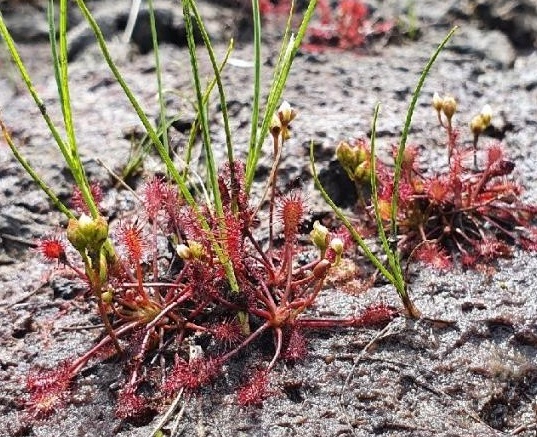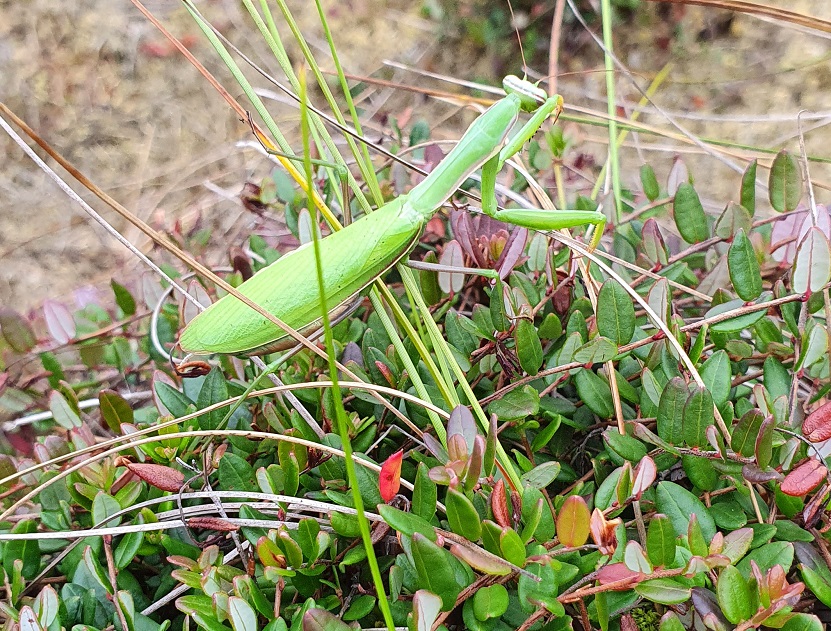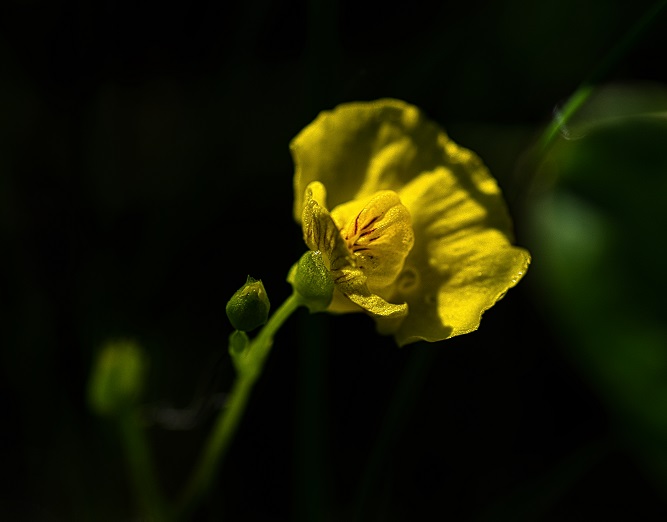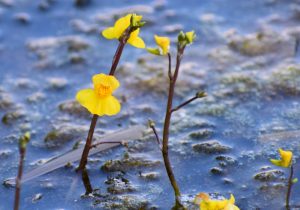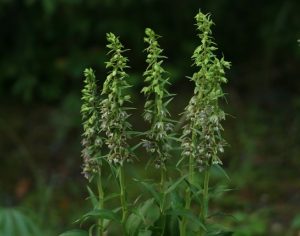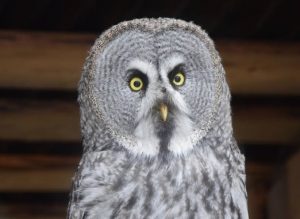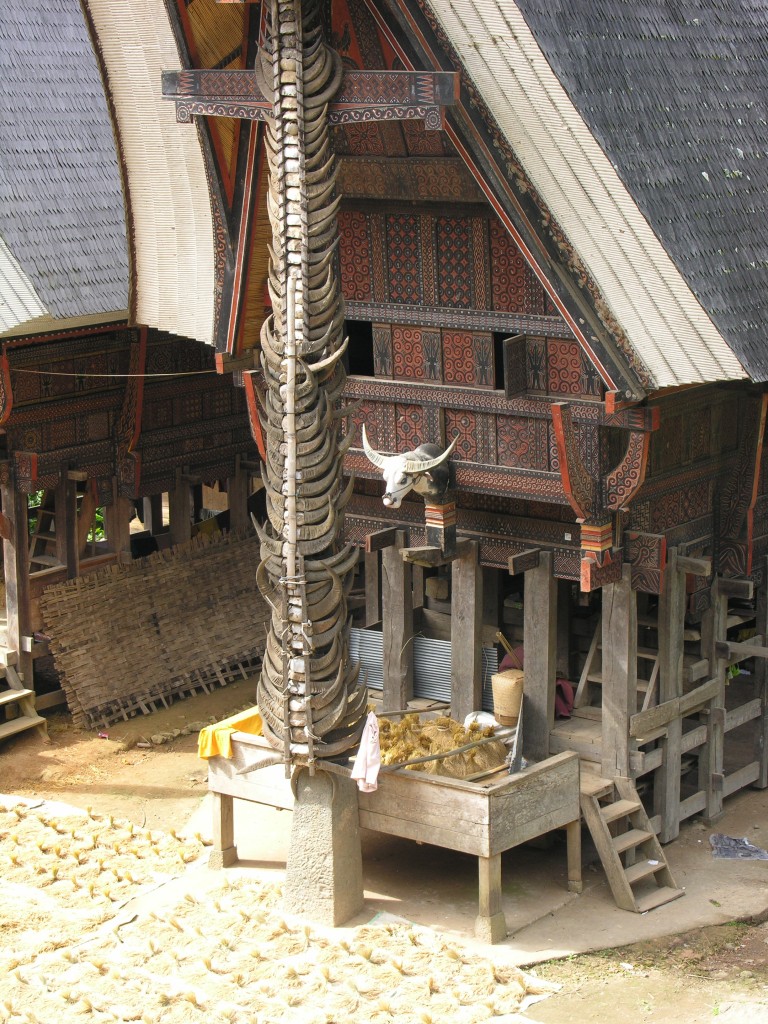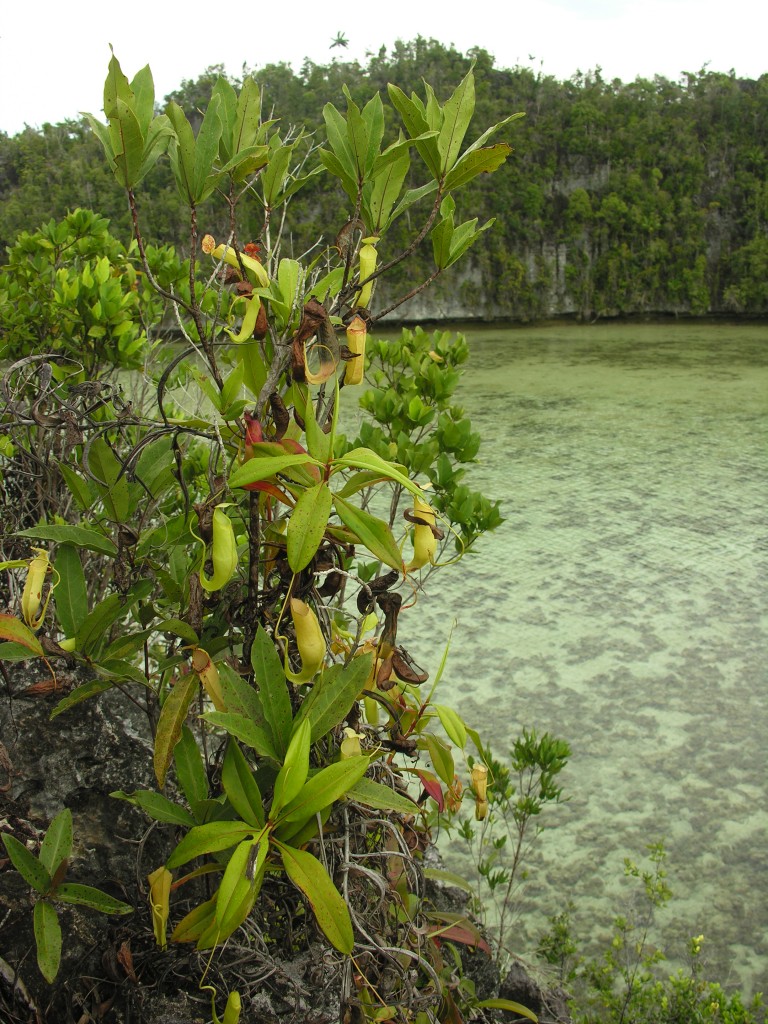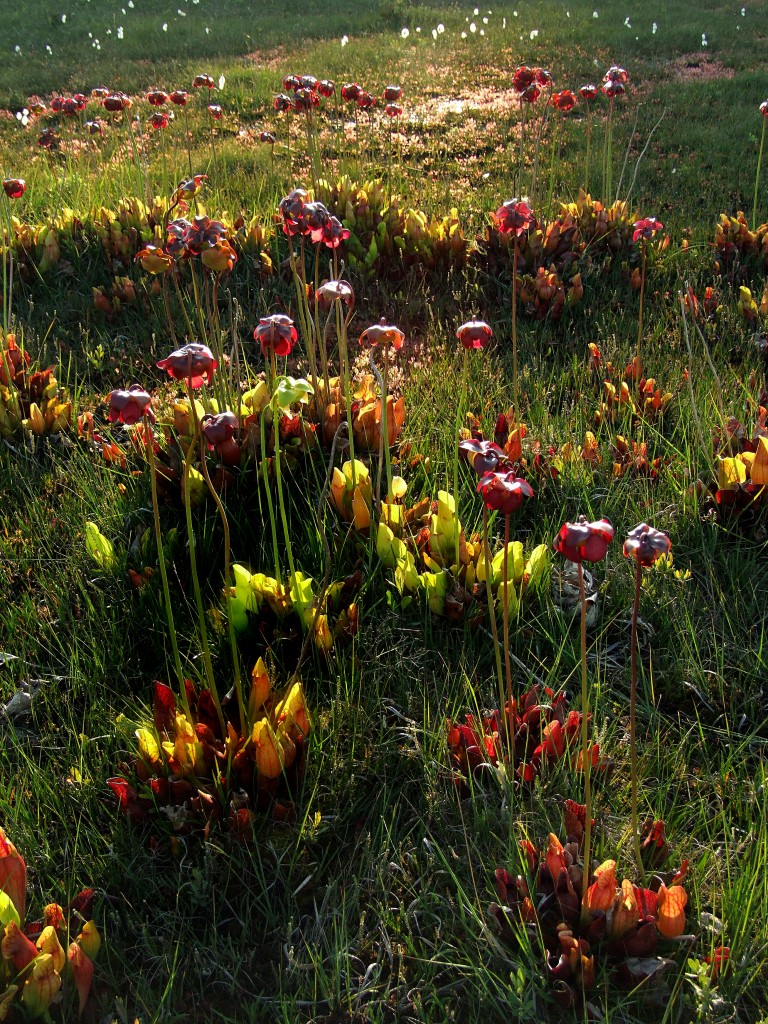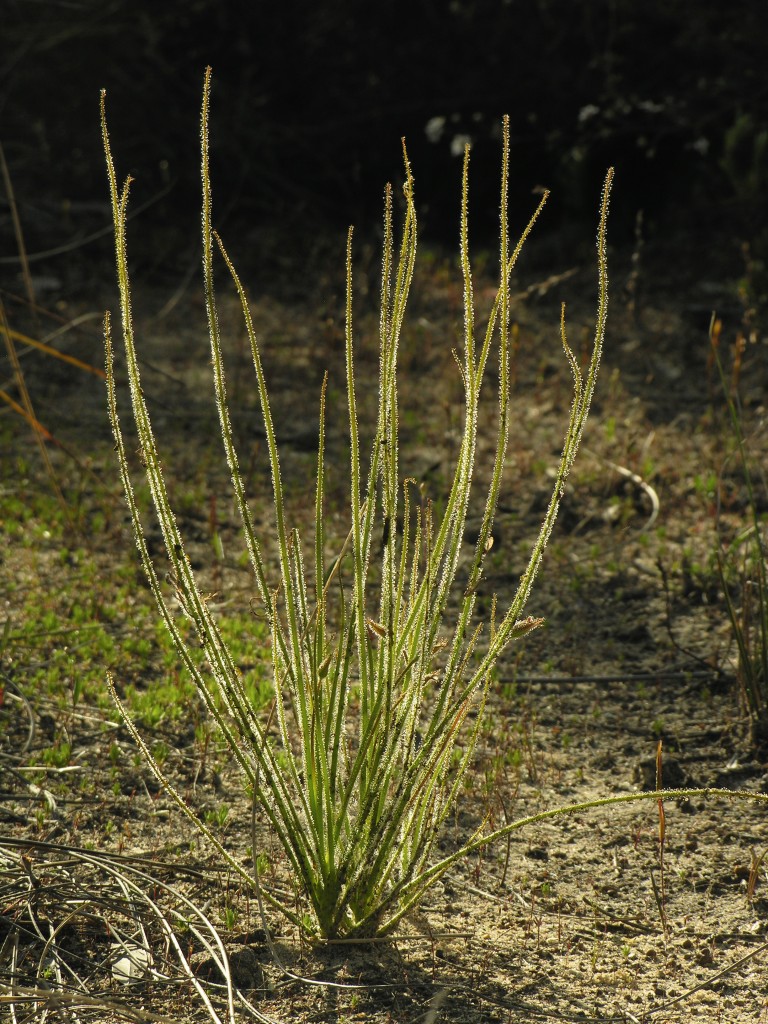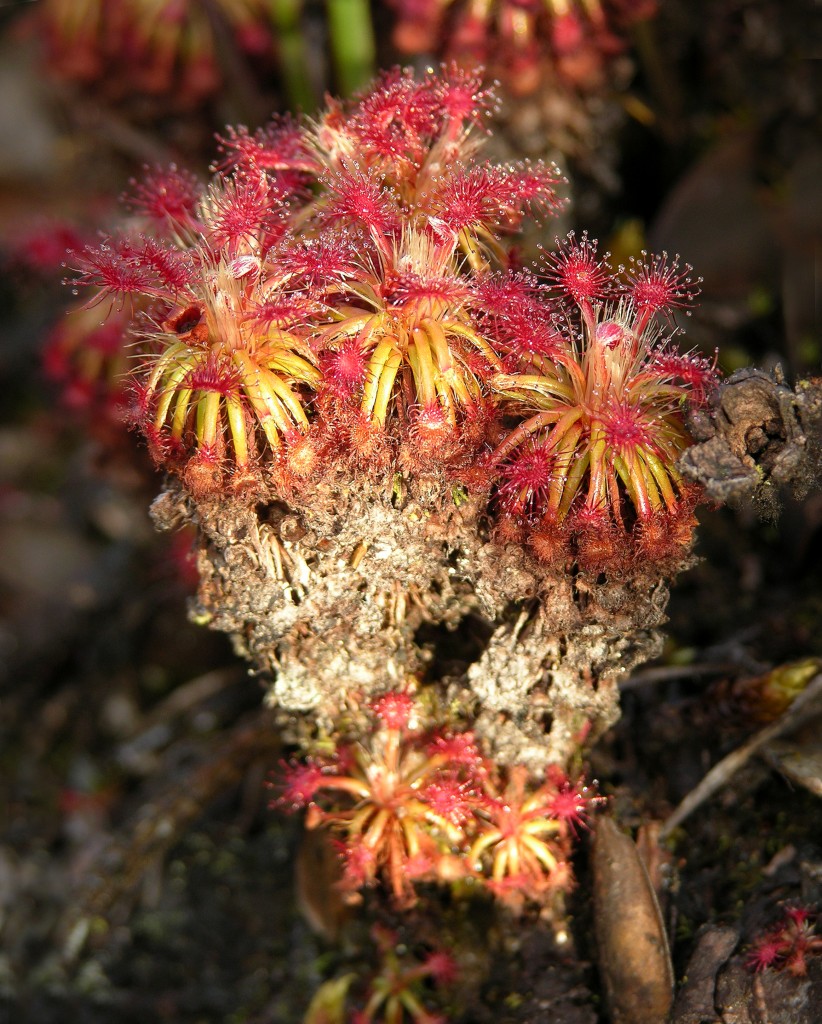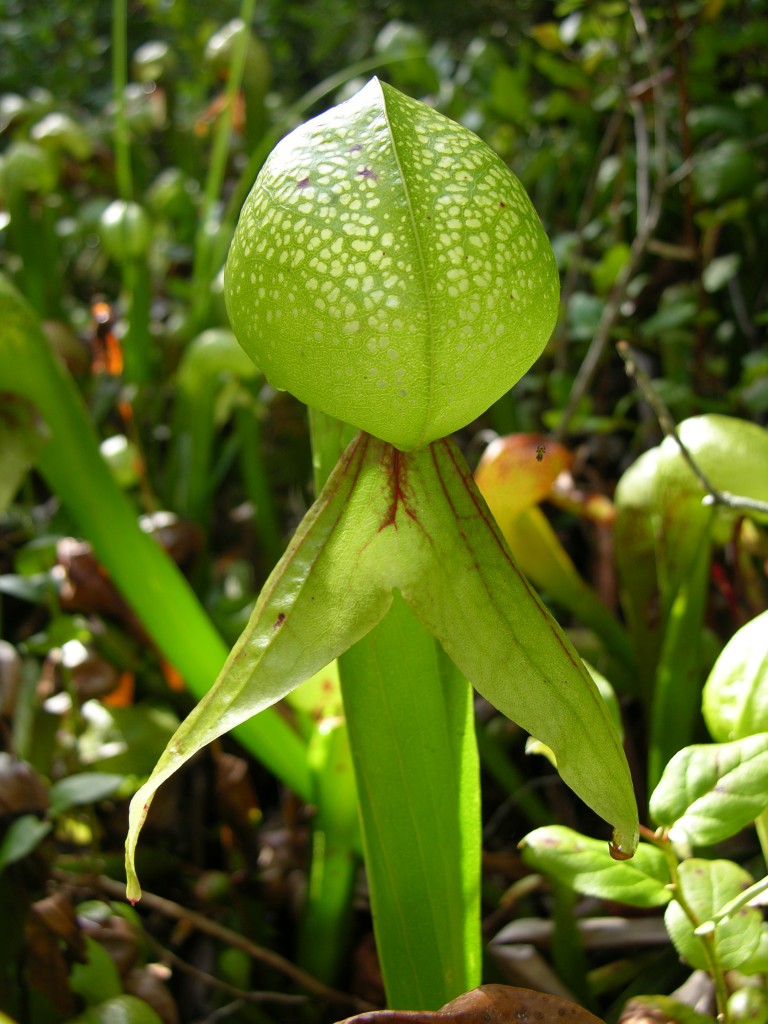In August 2007, I had the opportunity to visit the island of Sulawesi with a friend Greg Bourke, to study a little known pitcher plant called Nepenthes glabrata which is endemic to elevated habitats of central Sulawesi between 1,600 and 2,000 meters above sea level. Sulawesi is an island of great diversity a melting pot of human cultures as well as a blend of Asia and Australasian fauna and flora and in recognition of its importance, large areas of this spectacular island are protected from commercial logging and remain largely pristine. Aside from plants and animals, Sulawesi is home to some of the most fascinating cultures and most beautiful architectural styles of South East Asia, and the central parts of the island is famous for the spectacular Tongkonan houses which the Torajan people continue to construct. Traditionally, the Tongkonan houses are the ancestral homes and storage houses of their builders and are notorious for their spectacular, highly decorated boat-shaped roofs. Today these beautiful buildings continue to be used for their traditional purposes and also attract large numbers of tourists who appreciate the cultural history of this fascinating part of Indonesia.
An Expedition to Papua
In December 2007, I had the opportunity to visit the province of Papua as part of a research assignment organized by Trubus to study the little known species of pitcher plants (Nepenthes) of that part of Indonesia.
The island of New Guinea is the second largest island in the world. Located to the north of Australia across the Torres Strait, New Guinea is a land of remarkable diversity of its peoples, plants and animals. It constitutes less than 1 % of the total land mass of our world, however is home to 10% of the total number of species on the planet, so represents a region of extraordinary natural wealth. The island is divided approximately in half, the western part comprises the Indonesian provinces of Papua and West Papua whereas the eastern half consists of the independent country of Papua New Guinea. Skaityti toliau…
An Expedition to Madagascar
In 2007 I traveled to Madagascar to study and photograph the carnivorous plants of that island. The first species which I intended to find was Nepenthes madagascariensis – a spectacular pitcher plant that is found only on the island of Madagascar. Nepenthes madagascariensis is in many respects, a very special species of pitcher plant, it was the first of its genus to be discovered, the earliest known record of it being a description published by Etienne de Flacourt recorded in 1658. The description of the plant reads:
It is a plant growing about 3 feet high which carries at the end of its leaves, which are 7 inches long, a hollow flower or fruit resembling a small vase, with its own lid, a wonderful sight. There are red ones and yellow ones, the yellow being the biggest. The inhabitants of this country are reluctant to pick the flowers, saying that if somebody does pick them in passing, it will not fail to rain that day. As to that, I and all the other Frenchmen did pick them, but it did not rain. After rain these flowers are full of water, each one containing a good half-glass.
At the start of the 18th century, the Canadian physician Dr. Michel Sarrazin secured twenty-five specimens of native North American pitcher plants which he sent to the French botanist Joseph Pitton de Tournefort for classification. Tournefort studied the strange, hollow, tubular leaves of the plants which Sarrazin had sent, and he soon established that the specimens represented a new genus of plants which he named Sarracenia in Sarrazin’s honour.
Byblis – the Rainbow Plants
Byblis is the most beautiful genus of all of the sticky-leaved insect-eating plants. All Byblis plants produces delicate, leaves lined with sparkling droplets of glue which reflect light with a silvery brilliance, and this has earned the genus the English name ‘the rainbow plants’.
Drosera – The Sundews
Drosera is the largest and most diverse genus of all the sticky insect eating plants – that is to say, the seven genera of plants which trap arthropods (mainly insects) by secretions of glue that like the plants sticky leaves. Currently, 188 species have been found, with representatives on every continent except Antarctica and in almost all countries of the world. The genus was named by Carolus Linnaeus in 1753, the name Drosera is derived from the Greek drosos (dew) and refers to glistening appearance of the plants’ glue laden leaves which sparkle and glisten in sunlight much like dew at dawn. Indeed, it is also the sparkling, appearance of the plants’ leaves which give this group their English name ‘Sundew’.
There are seven genera of pitcher plants that are distributed across the world, the most unusual of all is the genus Darlingtonia which consists of one species, D. californica, which produces extraordinary shaped, hollow leaves that resemble striking cobras, poised upright ready to attack. It is the strange shape of the foliage of D. californica which has earned this plant its common name ‘the cobra lily’ and a reputation as one of the most bizarre of all carnivorous plants.
D. californica is found exclusively on the west coast of the United States of America as scattered populations distributed across Oregon and northwest California. This plant was originally discovered in 1841 to the northwest of Mount Shasta by an American botanist, J. D. Brackenridge. Brackenridge was at the time undertaking an expedition to the remote western frontier and found D. californica by chance. The genus Darlingtonia was formally described by botanist John Torrey in 1853 and named in honour of his friend, Dr. William Darlington, a 19th-Century physician and politician of Birmingham, Pennsylvania.
